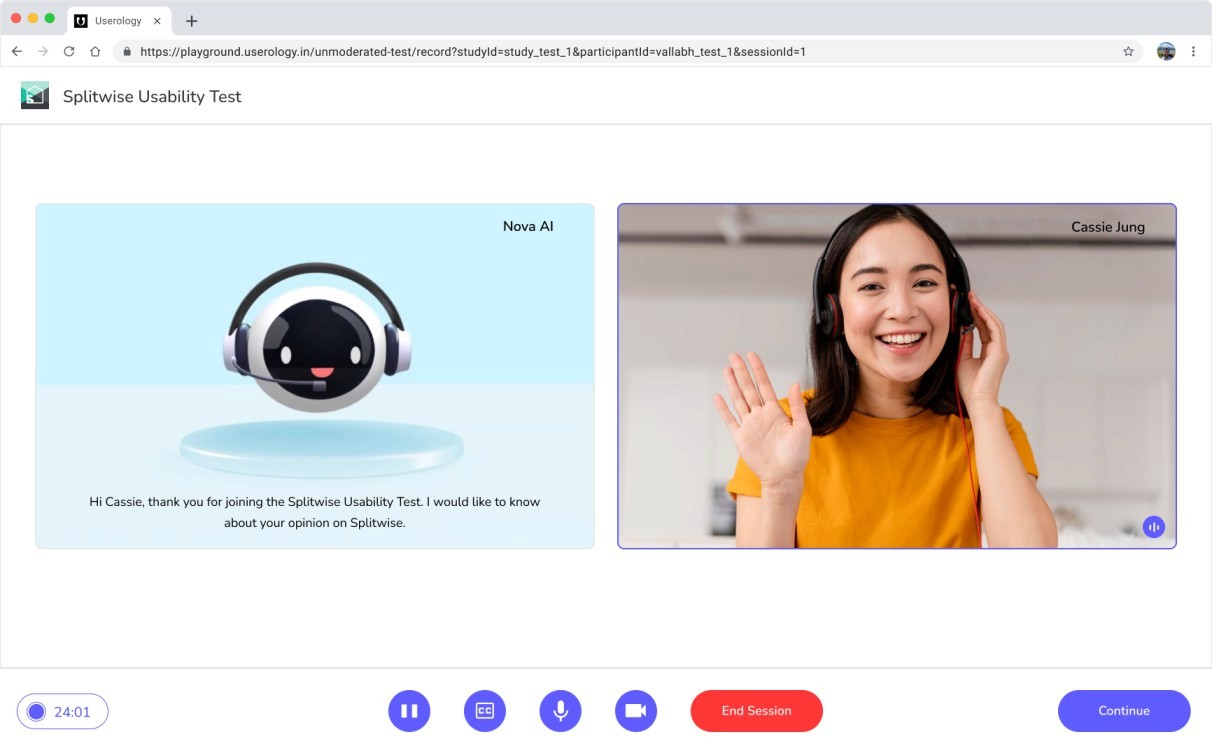
Shrey Khokhra
10 Jan 2025
5 min read
10 AI-Moderated Research Trends Transforming User Feedback

In today’s fast-paced world, staying ahead in product development and user research requires leveraging the latest tools and techniques. AI-moderated research is transforming how teams gather and interpret user feedback, offering speed, precision, and actionable insights.
This blog explores 10 key trends in AI-moderated research that are shaping the future of UX, customer experience, and product innovation. Whether you’re a researcher, designer, or product manager, these insights will help you stay at the cutting edge of your industry.
1. The Rise of Real-Time Insights
Gone are the days of waiting weeks for research results. AI-moderated research tools now provide real-time insights, allowing teams to make immediate decisions and adapt to user needs on the fly.
What This Means for Teams: Faster decision-making cycles and reduced time-to-market.
Example: Tools like Userology deliver fast, actionable feedback to empower agile product development.
2. Personalization at Scale
AI is enabling researchers to tailor surveys, prompts, and interactions based on participant behavior. This enhances user engagement and improves the quality of insights collected.

Why It Matters: Higher engagement means richer, more accurate data.
Pro Tip: Use AI tools that dynamically adapt questions based on user responses for deeper insights.
3. Sentiment Analysis as a Standard Feature
Sentiment analysis is no longer a luxury—it’s a standard in AI research tools. AI can now detect nuances in user responses, identifying emotions and sentiments with high accuracy.

Benefit: Better understanding of user pain points and motivations.
Impact: Design products that resonate emotionally with your audience.
4. Automating the Tedious Tasks
From transcribing interviews to categorizing feedback, AI takes over repetitive tasks, freeing up researchers to focus on strategy and decision-making.

Why This Matters: Teams save time and reduce human error.
Insight: Automation doesn’t just make research faster—it makes it smarter.
5. Voice and Video Analysis for Deeper Insights
AI is expanding beyond text analysis to include voice and video feedback. By analyzing tone, expressions, and non-verbal cues, researchers can uncover insights that were previously inaccessible.
Use Case: User testing sessions that analyze participant facial expressions to gauge true emotional responses.
Trend to Watch: AI tools that integrate seamlessly with video conferencing platforms.
6. AI-Driven Recruitment of Participants
Finding the right participants for research is often a bottleneck. AI-powered tools now match researchers with participants who fit specific criteria, speeding up the recruitment process.

Impact: Faster, more targeted studies.
Pro Tip: Use platforms that combine AI with demographic and psychographic data for optimal participant selection.
7. Accessibility in Research
AI is driving inclusivity by making research accessible to diverse populations, including those with disabilities. AI tools can translate, transcribe, and adapt content for various user needs.

Benefit: Reaching broader audiences for more representative insights.
Example: AI-generated subtitles or translations for global research projects.
8. Ethical AI Research Practices
As AI grows, so do concerns about data privacy and ethical use. Transparent algorithms, data security measures, and ethical AI usage are becoming top priorities for researchers.
Why This Is Crucial: Building trust with users and participants is essential for long-term success.
Tip: Choose AI tools that prioritize privacy and comply with global data regulations like GDPR.
9. AI-Powered Collaboration Across Teams
Research is no longer siloed. AI tools are making it easier for cross-functional teams to access and act on insights, fostering better collaboration between researchers, designers, and stakeholders.
Outcome: More cohesive product strategies and faster iteration cycles.
Best Practice: Share AI-generated insights across teams using integrated dashboards.
10. Predictive Analytics for Smarter Decisions
AI is moving beyond insights to predictions. By analyzing historical data, AI tools can forecast user behavior and help teams anticipate future needs.
Why It Matters: Stay proactive instead of reactive in addressing user needs.
Example: AI tools that predict how design changes will impact user satisfaction.
Embrace the Future of Research with Userology
As these trends show, AI-moderated research is more than a tool—it’s a game-changer for businesses that want to innovate and scale. If you’re ready to experience the benefits of AI-powered research, it’s time to explore Userology.
Our platform is built to deliver faster, deeper insights, helping you make smarter decisions and accelerate your product development process.
📌 Book a demo today and see how Userology can help your team stay ahead of the curve.